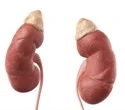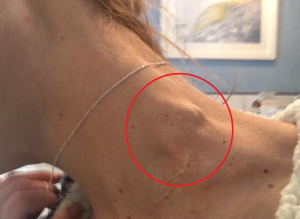
The most prevalent potentially fatal hereditary disorder, autosomal dominant polycystic kidney disease (ADPKD), affects roughly 500,000 persons in the United States alone. The majority of cases of the condition do not have a cure, but new research may lead to novel gene therapies.
For many years, scientists have known that around 80% of instances of the condition are caused by mutations in the PKD1 gene, which produces the polycystin-1 (PC1) protein. The protein, however, is too large to be altered using gene therapy techniques.
The Yale Department of Cellular and Molecular Physiology’s Laura Onuchic, MD, postdoctoral researcher, and Michael Caplan, MD, PhD, department head and the C.N.H. Long Professor of Cellular and Molecular Physiology and professor cell biology, has found that just a small piece of this protein might hold the key to preventing the disease. This finding could lead to opportunities to develop a new class of therapeutics. The team published its findings on March 30 in Nature Communications.
About one in 1,000 persons have ADPKD, a genetic condition. Cysts grow in size and number in the kidneys that are afflicted. There are about a million nephrons in each of our kidneys. In the disease, some of these nephrons grow into sizable, fluid-filled cysts over the course of decades, displacing the healthy tissue. This can eventually deteriorate and squeeze the working part of the kidney, impairing renal function. According to Onuchic, the study’s first author, “at that point, a patient’s kidneys are really enormous; they can be the size of a football.” Normal kidneys are around the size of a fist, in contrast.
A renal failure needing dialysis or kidney transplant will affect about half of persons with the conditionThe condition will cause renal failure in about 50% of patients, necessitating dialysis or a kidney transplant. Moreover, it can be transferred from parent to kid; if one parent is a carrier, half of their offspring would probably be afflicted. So, she continues, “you have all these big families where the illness runs in numerous generations.”
A little more than a year ago, a team under the direction of Stefan Somlo, MD, the C.N.H. Long Professor of Medicine (Nephrology) and Professor of Genetics, discovered that in animal models, the kidneys became larger when the PC1 protein was deleted. The kidneys recovered to normal once the protein was expressed once more.
In a really lovely experiment, they demonstrated that in mouse models of polycystic kidney disease, where these animals develop massive cysts in their kidneys, even when those cysts have already developed, turning the expression of the normal protein back on makes the cysts go away,” says Caplan.






